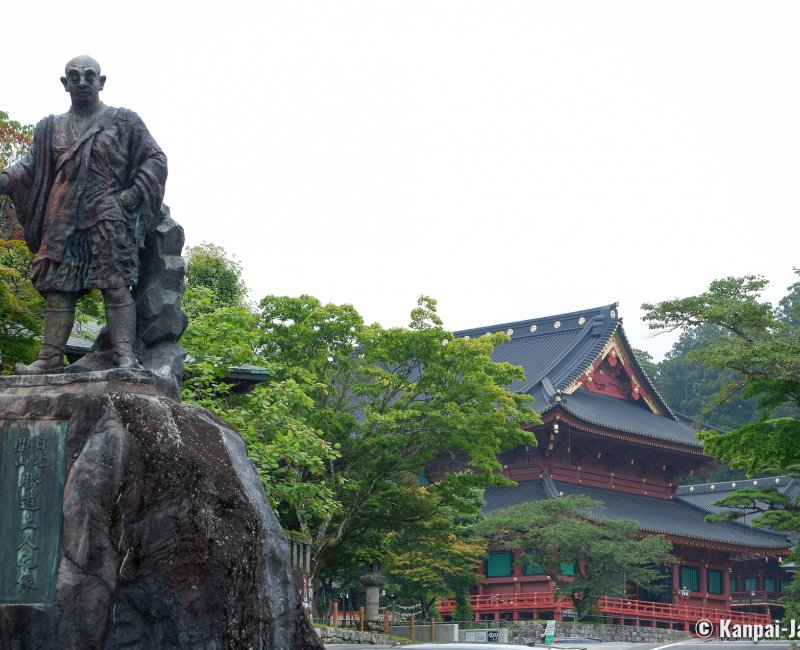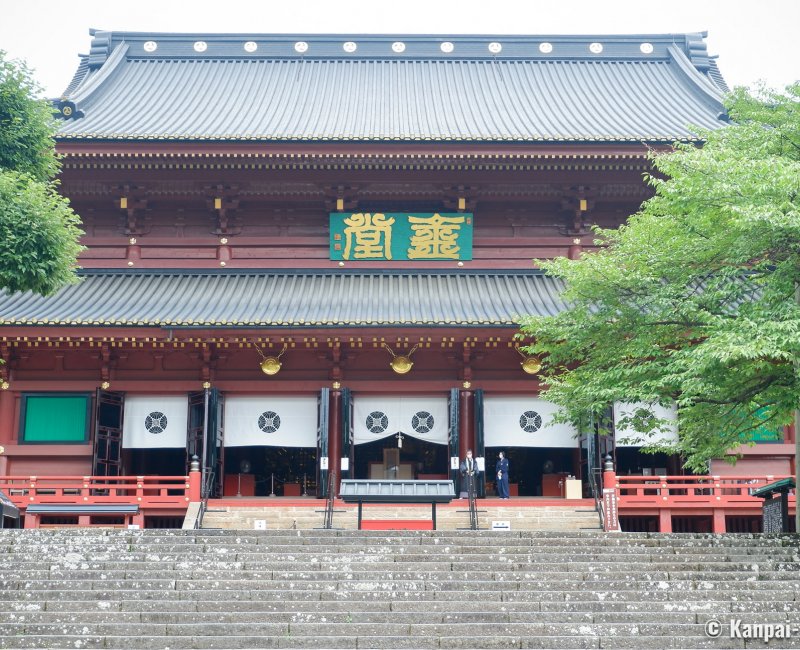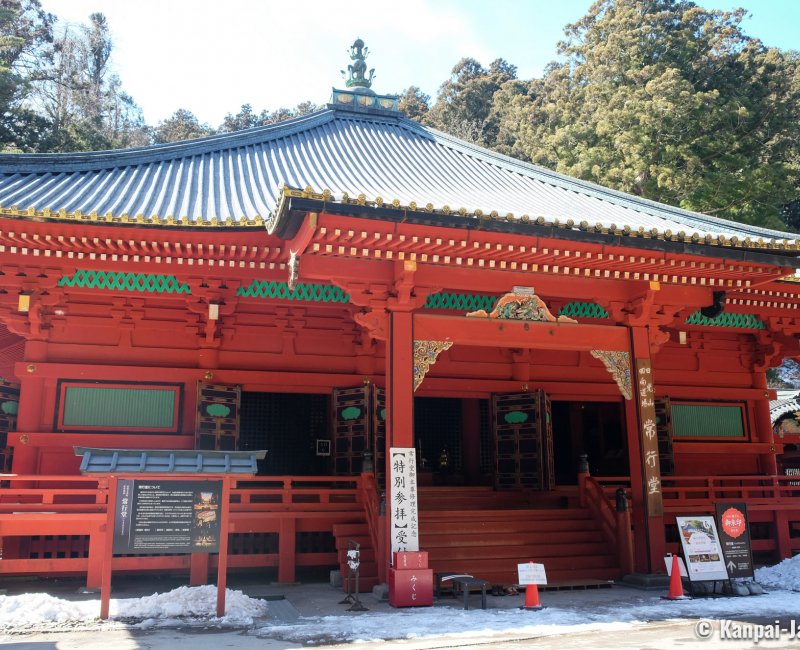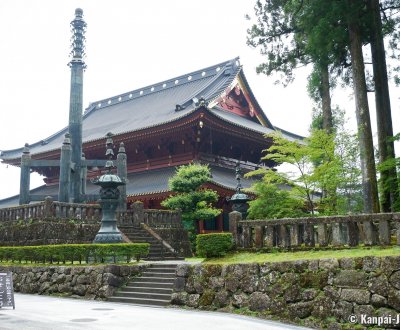Rinno-ji
Nikko’s Great Buddhist Temple
Rinno-ji is a Buddhist temple located in Nikko, in the north-west of Tochigi Prefecture. Last renovated in March 2021, its main building Sanbutsudo impress by its great size and the three Buddha statues it shelters. Nestled at the foot of Mount Nantai at the edge of the forest, the site is infused with ancient history.
Rinno-ji temple, along with Futarasan-jinja shrine and the Toshogu and Taiyuin mausoleums, belongs to the syncretistic Nikko-zan complex that used to be under the Tokugawa shogunate’s governance. Listed in the UNESCO World Heritage, all these exceptional constructions (both by their extravagant architectures and their connections to the ruling powers) are gathered in the same area and are to be visited successively.

From Shodo Shonin to the Tokugawa dynasty
Rinno-ji temple was founded in 766 by Shodo Shonin (735 – 817), a monk originating from Tochigi prefecture bearing a specific attraction for Mount Nantai, a 2,486 meters high majestic volcano 🌋 that reminded him of the Buddhist deity Kannon.
In its early days, the temple was a simple thatched-roof cabin and overtime became famous in Kyoto (the capital of Japan at the times) among the highest religious executives who endeavored the travel to pray at the foot of Mount Nantai.
It was the Tokugawa Shogunate (1603 - 1867) that established the importance of the religious complex. Tokugawa Ieyasu (1543 - 1616), the first of the dynasty to ascend to power as a shogun, commissioned famous monk Tenkai (1536 - 1643) to restore and expand Rinno-ji temple. He also entrusted him with the construction of the neighboring shrine: the Toshogu. Later, Tokugawa Iemitsu (1604 – 1651), Ieyasu’s grandson, continued to largely finance the site for it to stay one of the most magnificent of the country.

Three Buddhas for each sacred mountain of Nikko
Of the several buildings constituting the Rinno-ji, the main hall hondo, called Sanbutsudo, literally the "3 Buddha’s pavilion" is certainly the most remarkable. It was named after the three impressive gilded lacquered wood statues, whose heights are comprised between 7 and 8 meters tall, that it is sheltering:
- On the right, Senju Kannon, goddess of mercy, is the representant of Mount Nantai. The statue is enshrouded in its 1,000 arms that hold as many tools intended to help each worshiper find the illumination.
- At the center, Amida Nyorai, representing Mount Nyoho. Buddha of light and infinite life, he reigns over his own paradise, the Pure Land into which he welcomes all the beings invoking his name. In a meditation posture, his kind look seems to envelop visitors in a limitless compassion.
- On the left, Bato Kannon represents Mount Taro and is a bosatsu crowned by a horse head. His angry face contrasts with the usually serene expressions of Kannon images. The horse symbolizes strength and vitality, and the ability to cross long distances and jump obstacles. It is also said to be a protector of animals.
The current day’s Sanbutsudo was built in 1645 and was completely renovated, outside and inside, over a ten-years period until March 2021. Its huge silhouette standing amidst Nikko’s forest is impressive.

Several specific pavilions to discover
Just behind the Sanbutsudo, a second large building called Gomado is used for goma purifying prayers, for which a fire 🔥 is built. Constructed in 1998, it was made with non-flammable materials that can also withstand powerful earthquakes.
Between the Gomado and the Sanbutsudo appears Sorin-to, a bronze tower of about 13 meters high and usually put at the top of a pagoda. It was elevated by monk Tenkai and is sheltering sutra scrolls. The 9 rings at its top represent the 5 Nyorai Buddhas of wisdom and 4 related bosatsu (Bodhisattvas).
In front of the temple’s main entrance, spreads the Shoyo-en garden. Its initial design, around a small pond mimicking the shores of Lake Biwa, is said to date back to the mid-17th century, although it was partly laid out again during the 19th century. This haven of green is particularly interesting in autumn 🍁 when the foliage turns red.
Lastly, in the grounds of the Rinno-ji, extending up to the gates of the Taiyuin mausoleum, includes the pavilions Hokkedo and Jogyodo, dedicated to the practice of ascetic meditation and where it is possible to reserve a private session with a monk. Founded in 848 by monk Ennin (794 – 864), Jogyo-do pavilion is dedicated to Buddha Amida, whose statue here is unique in the world. The deity is indeed represented with a crown and riding a peacock, a bird symbol of purity, in addition to the usual lotus flower.
Rinno-ji is certainly a must-see in Nikko, with its wonderful traditional architecture and an omnipresent natural environment changing with the season, a combination that is sure to fascinate sightseers.

